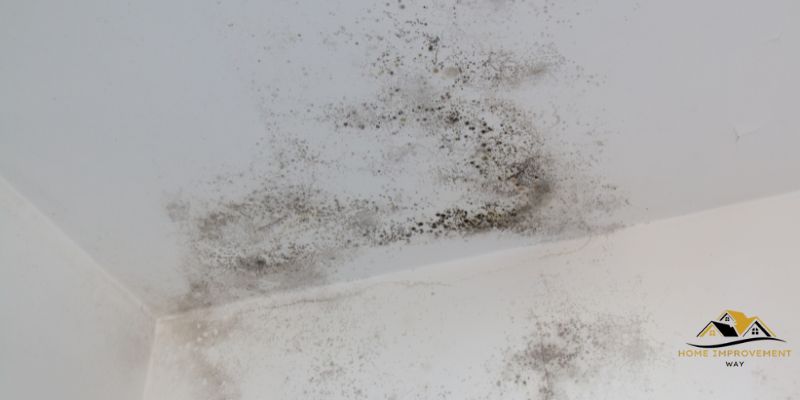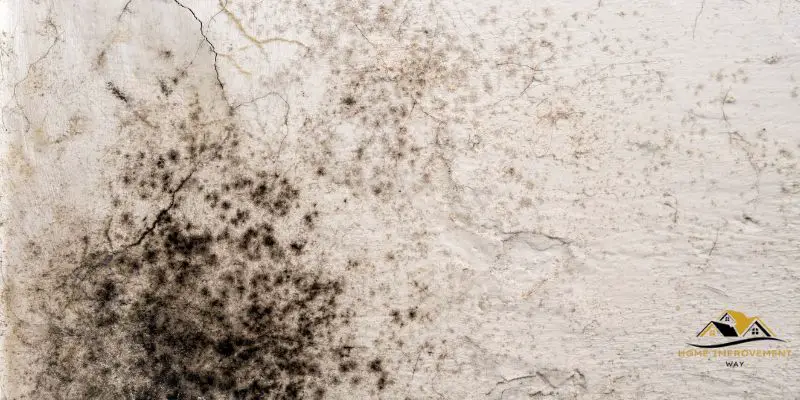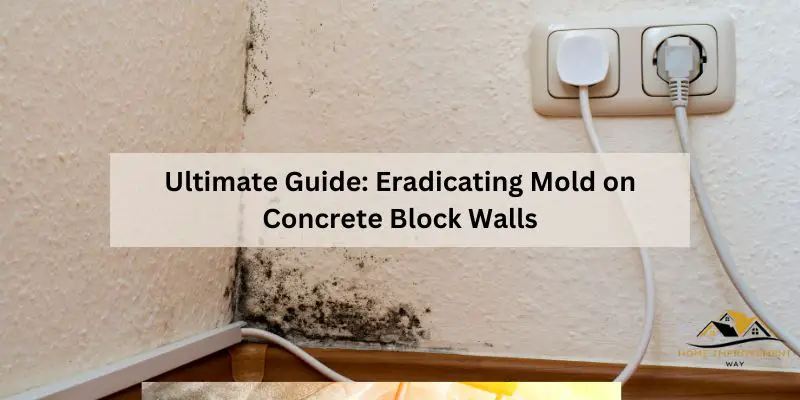To get rid of mold on concrete block walls, scrub the affected area with a mixture of bleach and water, then rinse thoroughly. Mold on concrete block walls can be a common problem that leads to unsightly stains and potential health hazards.
However, with the right approach, you can effectively eliminate this issue and restore the cleanliness of your walls. By using a mixture of bleach and water, you can scrub away the mold and prevent it from returning. We will provide you with a step-by-step guide on how to get rid of mold on concrete block walls, so you can maintain a clean and healthy living space.
Identifying Mold on Concrete Block Walls
Identifying mold on concrete block walls is crucial for effective mold removal and prevention. Mold can be a health hazard and cause damage to your property if not dealt with promptly. In this section, we will discuss the visual signs of mold and common areas where mold can grow on concrete block walls.
Visual Signs Of Mold
The following are the visual signs to identify mold on concrete block walls:
- Discoloration: Look out for noticeable black, green, or white patches that differ from the original wall color.
- Texture Changes: Mold-infested concrete block walls may appear fuzzy, slimy, or have a powdery texture.
- Musty Odor: Mold often emits a distinct, damp smell. If you notice an unpleasant odor in the vicinity of your concrete block walls, mold growth could be the culprit.
If you observe any of these signs, it is essential to take immediate action to prevent mold from spreading further and causing additional damage.
Common Areas Where Mold Can Grow On Concrete Block Walls
Mold can grow in various areas on concrete block walls, including:
| Area | Description |
|---|---|
| Basements | Mold thrives in damp, poorly ventilated basements, especially in areas prone to leaks or high humidity levels. |
| Bathrooms | The constant moisture and lack of proper ventilation in bathrooms create an ideal environment for mold growth on concrete block walls. |
| Kitchens | Areas near sinks, dishwashers, or other water sources in kitchens are susceptible to mold growth due to splashing water and high humidity. |
| Crawl Spaces | Crawl spaces underneath the house can accumulate moisture, making them prime breeding grounds for mold. |
If you have concrete block walls in any of these areas, it is essential to regularly check for mold and take appropriate measures for its removal and prevention.
By being vigilant and proactive in identifying and addressing mold on concrete block walls, you can ensure a healthier environment and protect the integrity of your property.

Causes Of Mold Growth
Mold can appear on concrete block walls due to moisture buildup and poor ventilation. To get rid of mold, make sure to address humidity issues, improve airflow, and clean the affected areas with mold-killing solutions like vinegar or bleach. Regular maintenance can prevent future growth.
Moisture And Humidity
Mold growth on concrete block walls can often be attributed to excessive moisture and humidity levels. When moisture is present, mold spores can easily spread and multiply, leading to the development of mold colonies. Concrete block walls, although they may seem solid and impenetrable, can still absorb moisture, especially in humid environments or areas prone to water seepage.
Excess moisture in the air can create the perfect breeding ground for mold, as it provides the necessary conditions for mold spores to germinate and thrive. When combined with warm temperatures, mold growth can occur rapidly, posing a health risk and compromising the structural integrity of your concrete block walls.
To prevent mold growth caused by moisture and humidity, it is crucial to manage moisture levels and control indoor humidity in your space. Adequate ventilation and moisture control solutions can help eliminate excess moisture, discouraging mold growth on your concrete block walls.
Lack Of Ventilation
Poor ventilation is another significant factor that contributes to mold growth on concrete block walls. Inadequate airflow prevents proper evaporation of moisture, allowing dampness to accumulate and create a favorable environment for mold to grow.
Areas with limited ventilation, such as basements, garages, and enclosed spaces, are particularly susceptible to mold growth. Without proper air circulation, moisture tends to linger, providing an ideal breeding ground for mold spores to settle on your concrete block walls.
By improving ventilation and ensuring proper airflow in your space, you can significantly reduce the risk of mold growth. Installing exhaust fans, opening windows, and using dehumidifiers can help improve ventilation and mitigate moisture-related issues.
Leakage And Water Infiltration
Leakage and infiltration of water are frequent culprits behind mold growth on concrete block walls. Whether due to plumbing leaks, roof leaks, or water seepage from the surrounding soil, any form of moisture intrusion can lead to mold problems.
Water can enter through cracks in the concrete or gaps in the walls, providing a direct route for mold spores to take hold. Once inside, the trapped moisture can create a damp environment, promoting mold growth and compromising the structural integrity of your concrete walls.
Preventing water infiltration involves identifying and addressing potential sources of leaks. Regularly inspect your concrete block walls for cracks, gaps, or signs of water damage. Repairing any leaks promptly and taking preventive measures, such as sealing the walls, can help mitigate mold growth caused by water infiltration.
Health Risks Associated With Mold
Mold on concrete block walls poses serious health risks, including respiratory issues and allergies. Learn effective ways to eliminate mold and ensure a safe living environment.
Mold growth on concrete block walls is not only unsightly, but it can also pose significant health risks. From respiratory problems to potential long-term effects, the presence of mold should never be taken lightly. In this section, we will explore the various health risks associated with mold and why it’s crucial to eliminate it as soon as possible.
Respiratory Problems
Mold releases tiny spores into the air, which can be easily inhaled. These spores can irritate the respiratory system, leading to a range of respiratory problems. Those with pre-existing conditions such as asthma or allergies are particularly susceptible, as mold can trigger or worsen their symptoms. Symptoms of respiratory problems due to mold exposure may include coughing, wheezing, chest tightness, or shortness of breath. If you or your family members experience any of these symptoms, it’s essential to address the mold issue promptly.
Allergic Reactions
Exposure to mold can also trigger allergic reactions in individuals who are sensitive to it. These reactions can vary in severity, from mild to severe. Common symptoms of mold allergies include sneezing, runny or stuffy nose, itchy and watery eyes, and skin rash. Some individuals may experience more severe allergic reactions such as hives or difficulty breathing. If you suspect mold allergies are affecting you or your loved ones, it’s crucial to seek medical attention and take steps to eliminate the mold.
Potential Long-term Effects
Ignoring a mold problem on concrete block walls can have potential long-term effects on your health. Prolonged exposure to mold spores can lead to chronic respiratory problems, persistent allergies, or even more severe health complications.
Research has linked mold exposure to conditions such as sinusitis, bronchitis, and even lung infections. It’s important to note that certain types of mold, such as black mold, can produce mycotoxins, which are toxic substances that can have detrimental effects on human health if exposure is prolonged. To ensure a healthy living environment, it’s vital to address any mold growth promptly and thoroughly.

Methods For Mold Removal On Concrete Block Walls
Mold growth on concrete block walls can be unsightly and potentially harmful to your health. Thankfully, there are effective methods for removing mold from these surfaces. In this article, we will explore preventive measures, safety precautions, and cleaning techniques to tackle mold on concrete block walls.
Preventive Measures
Mold prevention plays a crucial role in keeping your concrete block walls free from mold. Here are some preventive measures to implement:
- Ensure proper ventilation in areas prone to high humidity, such as basements and bathrooms.
- Repair any leaks or water damage promptly to prevent moisture buildup.
- Install dehumidifiers to reduce indoor humidity levels.
- Use mold-resistant paint or coatings on the concrete block walls.
Safety Precautions
Mold removal can release spores into the air, which may cause allergic reactions or respiratory issues. It is crucial to take safety precautions before starting the removal process:
- Wear protective clothing, including gloves, goggles, and a mask to prevent direct contact and inhalation of mold spores.
- Ensure the work area is well-ventilated by opening windows or using fans.
- Keep children and pets away from the area until the mold removal is complete.
- Dispose of mold-infested materials properly to prevent further contamination.
Cleaning Techniques
When tackling mold on concrete block walls, it is essential to choose the right cleaning techniques to effectively remove the mold. Here are some effective methods:
- Dry Brushing: Start by removing loose mold with a dry brush. Be sure to wear a dust mask to avoid inhaling the spores.
- Vacuuming: Use a HEPA vacuum cleaner to suck up any remaining loose mold spores.
- Scrubbing: Mix a solution of warm water and mild detergent. Scrub the affected areas using a stiff-bristled brush, focusing on removing all visible mold.
- Bleach Solution: To disinfect the concrete block walls and kill any remaining mold spores, you can use a bleach solution (1 part bleach to 10 parts water). Apply the solution to the walls using a sponge or sprayer and let it sit for 15 minutes before rinsing it off.
- Natural Mold-Killing Solutions: Alternatively, you can use natural mold-killing solutions like vinegar or hydrogen peroxide. These solutions are eco-friendly and can be just as effective in eliminating mold.
Remember, thoroughness is key when cleaning mold from concrete block walls. Make sure to address all affected areas and dry the walls thoroughly to prevent future mold growth. By following these methods, you can effectively remove mold and maintain a mold-free environment in your home.
Conclusion
Maintaining mold-free concrete block walls is crucial for a healthy and visually appealing space. By following the tips discussed in this blog post, such as identifying the cause, removing the mold effectively, and preventing future growth, you can keep your concrete block walls clean and mold-free.
Regular maintenance and quick action are the keys to success in this regard. Embrace these practices and enjoy a mold-free environment for years to come.


